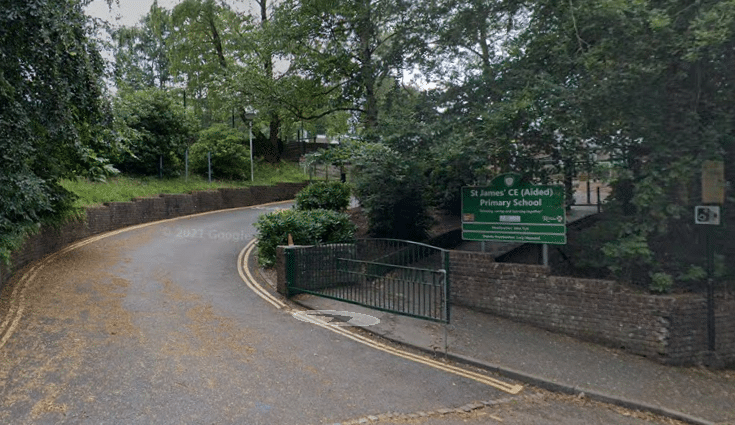MORE than 100 local schoolchildren have been moved within their school and into other local schools after structural concerns were raised by the Department for Education (DfE) last week (June 15).
DfE last week informed schools that they had adopted new guidelines from the Institute of Structural Engineers regarding structural detailing of roofs and RAAC (Reinforced Autoclaved Aerated Concrete), Kent County Council (KCC) said.
“This has necessitated the immediate closure of a small number of schools in Kent, as well as in other counties, while work takes place to make them compliant with the new standards,” said a KCC spokesperson.
St James’ C of E Primary School in Sandrock Road is one of four Kent schools affected.
“The affected structure relates to part of the roof at the junior block,” the Diocesan Board of Education and St James’ Primary School confirmed.
Displaced pupils, from Year 3 and Year 6, are being accommodated in non-affected classrooms elsewhere on the school site, as well as at Rusthall St Paul’s, and Temple Grove Academy.
The spokesperson added: “KCC have confirmed that they expect all works to be completed by September 1, 2023.”
A school parent told the Times: “I feel sorry for the headteacher. It’s quite hard. It’s a big school. They need to find places for 90 children in Year 3 and 90 children in Year 6.”
In a message to parents last week, Tunbridge Wells MP Greg Clark said he had spoken with KCC’s Cabinet Member for Schools and the Government’s Minister of State for Schools.
“Both confirmed that when this type of defective concrete is discovered, there is no safe alternative but to take it immediately out of use,” he said.
However, the situation has sparked a proxy battle between Mr Clark and the Liberal Democrat candidate for the Tunbridge Wells constituency, Mike Martin, who has slammed the Government for delaying the publishing of detailed information on the condition of every school building in the country.
A vote in Parliament on May 23 had called for detailed school-level data from the latest Condition of School Building Survey, to be presented to the House by June 5.
Mr Martin said: “The Government revealed parts of the survey data, including that 7,158 schools in England contain at least one building component, such as a roof, door or light fittings, deemed to be “life-expired” or at serious risk of imminent failure [and] almost nine in 10 schools have at least one building component that has a “major defect” or is “not operating as intended”.
“It is appalling that Greg Clark voted to cover up the dangerous state of St James’ school. Even worse, for him to come out yesterday (May 31) “committing support” to the school after trying to hide the facts is monstrous hypocrisy.”
However, Mr Clark hit back, telling the Times: “It is wrong to try to politicise the local MP supporting a local school.
“On May 23, the Minister for Schools, Nick Gibb, said that (i) every school affected by defective concrete would be informed immediately that it was confirmed, and (ii) a spreadsheet of detailed information on all schools across the country would be published when all 1.2 billion entries had been checked, which would be no later than July 20.
“That is perfectly reasonable, it is exactly what is being done here. St James’ Primary School is doing a difficult job extremely well and they should be supported, not drawn into political nonsense.”








